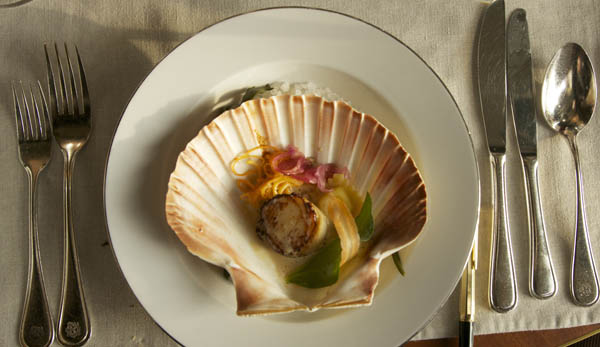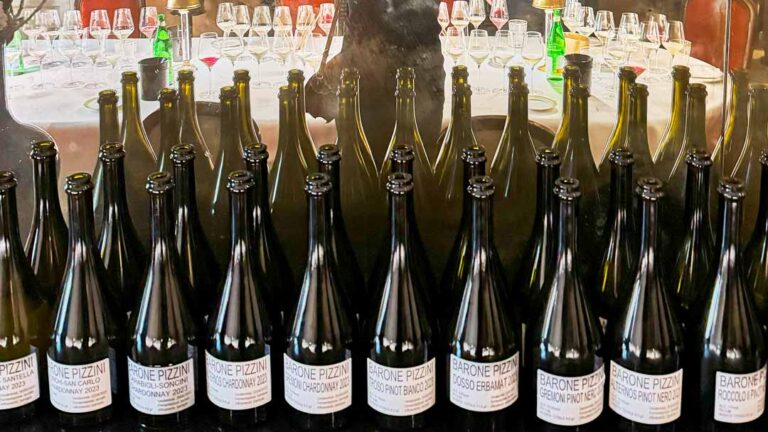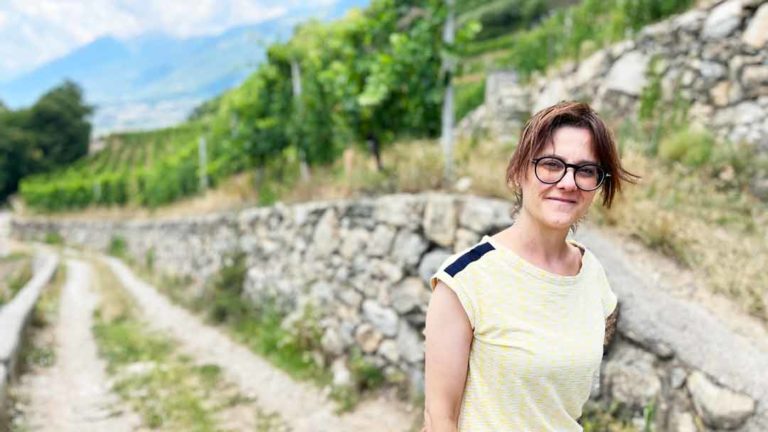Expensive top wines from northern Italy with Gaia Gaja
A little while ago the always equally charming Gaia Gaja made her annual visit to Stockholm to present her and her family’s wines on the Swedish market. BKWine Magazine’s reporter Roland Eriksson met the daughter of the legendary Angelo, who now runs the winery together with her sister.
Gaja is a winery founded in 1859 in Piedmont in northern Italy. There are no compromises made on quality which also means that prices are high. Finding a wine under €20 per bottle is almost impossible and if you want the firm’s flagship Barbaresco DOCG then you will need to cough up more than one hundred. But on the other hand, you will probably never be disappointed.
After studies in oenology and economics in Alba, Turin and Montpellier Angelo Gaja began at age 21, in 1961, to work together with his father Giovanni, which proved perhaps not to be the easiest thing to do. At the time, the Piedmont was quite underdeveloped; the wines were produced in the traditional way with great harvest yields, blending different vineyard locations and ageing wines for very long in large wooden barrels.
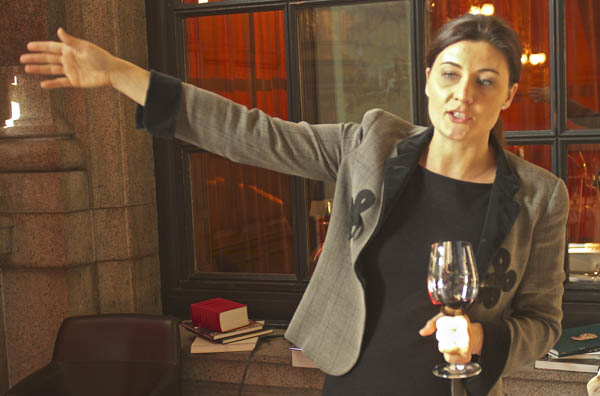
Angelo wanted big changes, perhaps too big according to Giovanni. A lot of his ideas were also contested by neighbours and colleagues. The 1960s and 70s was a time of change for Gaja. Introduction of green harvesting to reduce the yield, using malolactic fermentation and ageing the wine in 225-liter barriques of French oak. Individual vineyards of high quality was begun to be sold in separately under vineyard names such as Sori San Lorenzo, Sori Tildin, Costa Russi and Sperss. The French grape varieties Cabernet Sauvignon, Sauvignon Blanc and Chardonnay were planted in Piedmont. In order to preserve the quality they sold bad vintages as bulk wine, or downgraded them to Langhe Rosso. The Wine Spectator magazine named Barbaresco “the best wine ever made in Italy” in 1985 and in 1998 Angelo was named Decanter Man of the Year.
In Piedmont today there are modernists and traditionalists. Gaja is a cross between the two with traditional long fermentation, a year in French barriques (1/3 of which are new), but the end of the ageing in large so-called botti of 10-100 hectolitres of Slavonian oak or chestnut, some 80-100 years old.
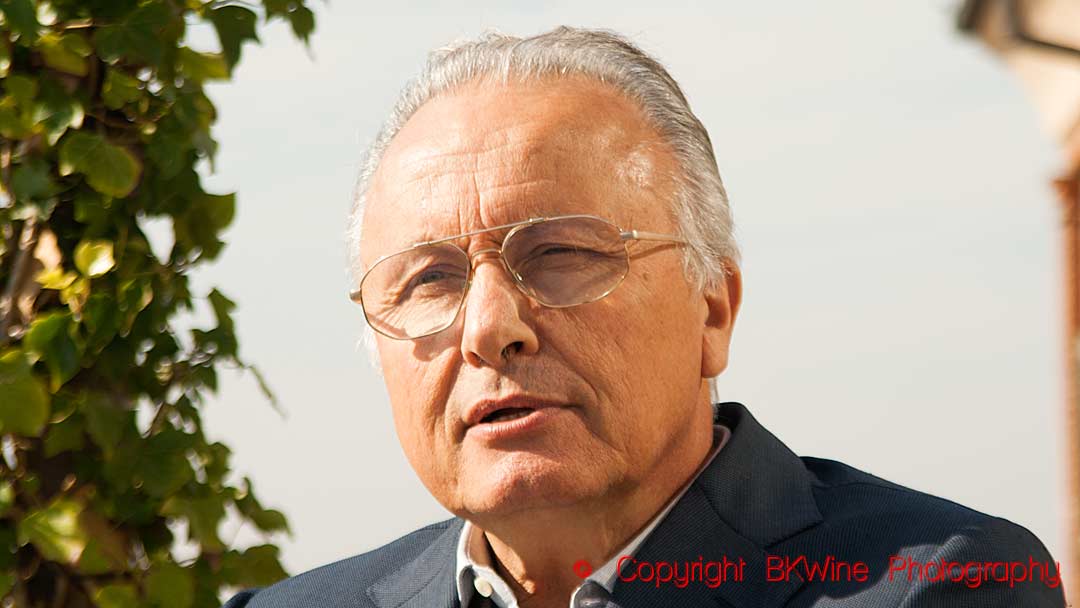
Like so many other Italian wine producers they began to expand outside the region’s boundaries with purchases in Montalcino in 1994 and in Bolgheri in 1996. In total they own 247 hectares of vineyard land. They only produce wines from their own grapes. Annual production is around 350,000 bottles. Much of the running of the company is managed now by his daughters Gaia and Rossana.
Gaia & Rey 2005
Langhe D.O.C. 100% chardonnay.
From the first chardonnay vines that were planted in Piedmont and also the first Italian white wine that was aged in barrels, has a very aromatic and concentrated aroma with hints of tropical fruit, peach and new oak, the taste is full-bodied, concentrated with a lot of tropical fruit, grape sweetness, balanced acidity, oak and length. Winery sample ~200 euro. 92 p.
Promis, Gaja Ca’Marcanda 2012
Tuscany I.G.T. 55% Merlot, 35% Syrah and 10% Sangiovese.
Bluish-red colour, medium body, large, young, dark sweet fruit on the nose with hints of cherry. The taste is young, soft and sweet-dark fruity with hints of cherry and quite soft tannins. ~27 euro. Launch November 2014. 85 p.
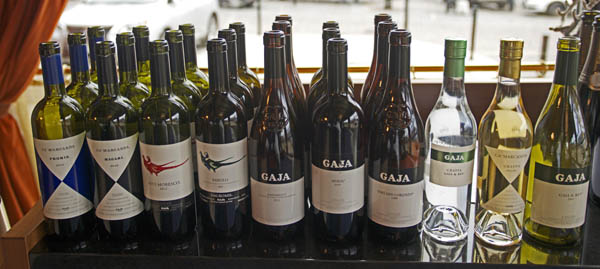
Magari, Gaja Ca’Marcanda 2012
Bolgheri D.O.C. 50% Merlot, 25% Cabernet Sauvignon and 25% Cabernet Franc.
Bluish-red colour, young, quite big nose with red berries, raspberries, cranberries, light floral notes, the taste is full-bodied, red fruit with hints of raspberry, cranberry, balanced tannins and barrel. ~36 euro. 87 p.
Sito Moresco Gaja 2012
Langhe D.O.C. 35% Nebbiolo, 35% Merlot and 30% Cabernet Sauvignon.
Bluish-red colour, young dark fruity aroma with hints of black currant, black cherry and barrel. The taste is young and full-bodied, sweet dark fruit, with hints of black currant and cherry with good balanced acidity and tannins, some barrel notes and good length. ~32 euro. 88 p.
Dragomis, Gaja 2009
Barolo D.O.C.G. 100% Nebbiolo.
Pale reddish brown colour, fairly big ripe and spicy aroma, slightly burnt with hints of raisins and barrel. The flavour is rich, dark fruit, with hints of tobacco and raisins, quite closed with quite harsh tannins and good length. ~42 euro. 87 p.
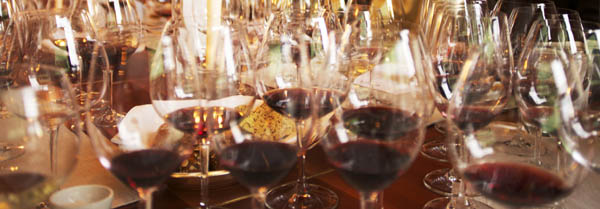
Barbaresco 2011
Barbaresco D.O.C.G. 100% Nebbiolo.
Orange-red colour, young, big, red fruits, lightly perfumed aroma with hints of cherry, dark cherries, flowers and barrels. The taste is quite full-bodied, with some maturity, cherry, red currant and wild mushrooms, with perfectly balanced acidity and tannins, length. ~120 euro. 92 p.
Sperss 2009
Langhe Nebbiolo D.O.C. 94% Nebbiolo and 6% Barbera.
Reddish-brown colour, fairly large generous aroma with some maturity notes, red fruit with hints of cherry and violet pastilles. The taste is full-bodied, tannic, red fruit with hints of cherry, balanced acidity and tannins, length. ~160 euro. 91 p.
Sori San Lorenzo 1999
Langhe Nebbiolo D.O.C. 95% Nebbiolo and 5% Barbera
Reddish-brown colour, full-bodied mature dark fruity aroma, with hints of black currant, raisin and barrel. The palate is full-bodied, ripe, concentrated, dark fruit with black currants, blueberries and barrels, perfectly balanced tannins, acidity and length. Winery sample, ~320 euro. 94 p.
Grappa Gaia & Rey
White colour, big grapey aroma with hints of white raisins. The taste is quite full-bodied, soft with fruity and grapey tones, white raisins, marzipan and length. ~48 euro (0.5 l). 88 p.
Grappa Magari
Light yellow colour, the scent is big, fruity and grapey with hints of grass and straw. The flavour is rich, the a bit alcohol-rich, grassy, with hints of concentrated grape must and barrel. ~44 euro. 89 p.
To accompany the wines Operakällaren’s chefs had composed a special menu that very well married with the wines’ characters and nuances, certainly mouth-watering! Seared hand caught scallops from Fröja with ravioli, dried tomato and beurre blanc. Risotto made with Aquarello Carnaroli superfineo rize with white Alba truffle and 36-month old Parmesan cheese. Pan fried aged Swedish filet de boeuf with marrow sauce, ox cheeks in red wine and shallot marmalade. Coffee and small temptations.
The tasting and lunch was organized by Vinunic, Gaja’s Swedish importer.
Roland Eriksson writes on BKWine Magazine on wine tastings with wine merchants and importers in Sweden. Roland is the author of a book on cognac (A Handbook: Cognac, 2007, published in Swedish) and one on rum as well as one on tea.
[box type=”info” style=”rounded” border=”full”]There are many exciting wine producers in the Piedmont. Discover the vineyards and the gastronomy of Piedmont on a wine tour with BKWine.
Travel to the world’s wine regions with the experts in wine and the specialist in wine travel.
Unique wine tours. BKWine wine tours.[/box]
